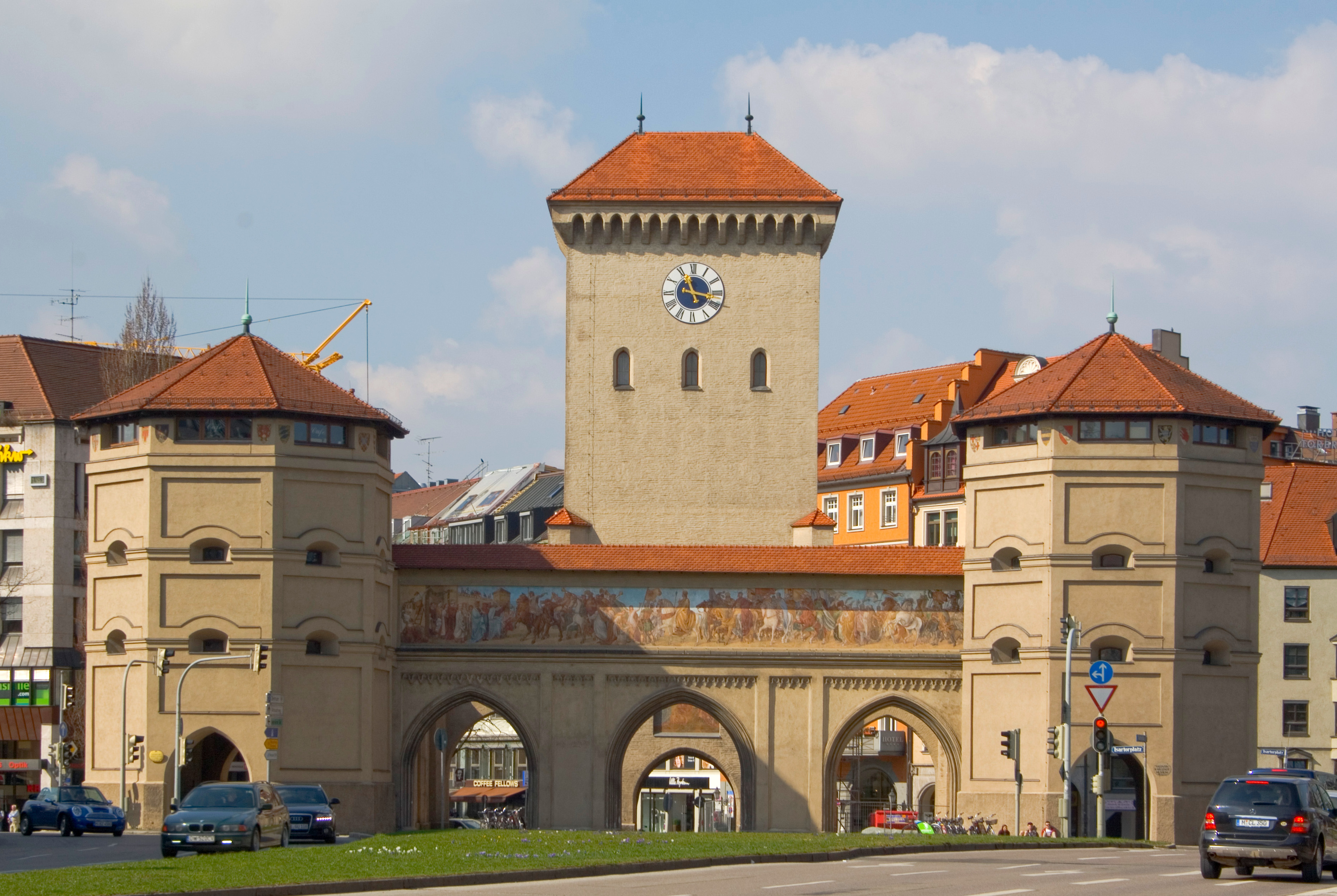Isartor on:
[Wikipedia]
[Google]
[Amazon]

 The Isartor at the Isartorplatz in
The Isartor at the Isartorplatz in
 The Isartor at the Isartorplatz in
The Isartor at the Isartorplatz in Munich
Munich ( ; german: München ; bar, Minga ) is the capital and most populous city of the German state of Bavaria. With a population of 1,558,395 inhabitants as of 31 July 2020, it is the third-largest city in Germany, after Berlin and Ha ...
is one of four main gates
Gates is the plural of gate, a point of entry to a space which is enclosed by walls. It may also refer to:
People
* Gates (surname), various people with the last name
* Gates Brown (1939-2013), American Major League Baseball player
* Gates McFadde ...
of the medieval city wall. It served as a fortification for the defence and is the most easterly of Munich's three remaining gothic town gates (''Isartor'', '' Sendlinger Tor'' and ''Karlstor
Karlstor in Munich (called Neuhauser Tor until 1791) is one of what used to be Munich's famed city wall from the medieval ages till late into the 18th century. It served as a major defensive fortification and checkpoint.
It is located at the w ...
''). The gate (German: ''Tor'') is located close to the Isar and was named after the river.Architecture
The Isartor was constructed in 1337 within the scope of the enlargement of Munich and the construction of the ''second city wall'' between 1285 and 1337 which was completed under the Emperor Louis IV. The gate first consisted of a main gate tower. Only with the construction of the moat wall of the gate tower the two flanking side towers were added and served as barbican. The Isartor is today the only medieval gate in Munich which has conserved its medium main tower and the restoration in 1833-35 byFriedrich von Gärtner
Friedrich von Gärtner (10 December 1791 in Koblenz – 21 April 1847 in Munich) was a German architect.
Biography
His father was also an architect, and moved in 1804 to Munich, where young Gärtner received his first education in archite ...
has recreated the dimensions and appearance close to the original structure. The frescos, created in 1835 by Bernhard von Neher, depict the victorious return of Emperor Louis after the Battle of Mühldorf
The Battle of Mühldorf (also known as the Battle of Ampfing) was fought near Mühldorf am Inn on September 28, 1322 between the Duchy of (Upper) Bavaria and Austria. The Bavarians were led by the German king Louis of Wittelsbach, while the ...
in 1322.
The Isartor today houses a humorous museum which is dedicated to the comedian and actor Karl Valentin
Karl Valentin (born Valentin Ludwig Fey, 4 June 1882 in Munich – 9 February 1948 in Planegg) was a Bavarian comedian. He had significant influence on German Weimar culture. Valentin starred in many silent films in the 1920s, and was sometimes ...
. A café for visitors has been integrated.
The Isartortheater, which produced Singspiele
A Singspiel (; plural: ; ) is a form of German-language music drama, now regarded as a genre of opera. It is characterized by spoken dialogue, which is alternated with ensembles, songs, ballads, and arias which were often strophic, or folk-like. ...
and spoken plays in the early 19th century, was destroyed in the Second World War
World War II or the Second World War, often abbreviated as WWII or WW2, was a world war that lasted from 1939 to 1945. It involved the vast majority of the world's countries—including all of the great powers—forming two opposi ...
.Seidel, Klaus J (1992), 'Munich' in ''The New Grove Dictionary of Opera'', ed. Stanley Sadie (London) After being heavily damaged by shelling, the medieval gate was rebuilt.
The Isartorplatz is served by the S Bahn station which is named '' Isartor'' after the gate as well as 2 tram lines.
References
* {{coord, 48, 8, 06, N, 11, 34, 54, E, type:landmark_region:DE, display=title Buildings and structures completed in 1337 Buildings and structures in Munich Gothic architecture in Munich Tourist attractions in Munich Gates Munich